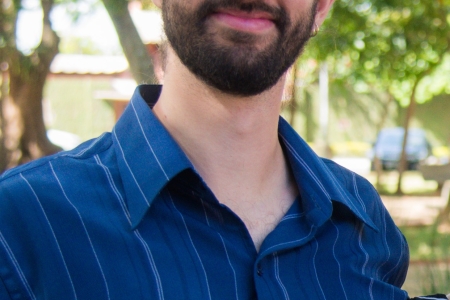A 40 metre-wide radio telescope being built in northeastern Brazil will be able to detect and locate mysterious flashing blasts of energy that are brighter than whole galaxies, according to a new study from the University of Portsmouth.
Fast radio bursts (FRBs) are intense bursts of radio waves that were first discovered in 2007. They are the brightest objects in astrophysics, but although over 800 have been detected so far, no one yet knows their origin.
Dr Ricardo Landim from the University's Institute of Cosmology and Gravitation has co-authored a paper, which investigates the capabilities of the BINGO radio telescope to search for FRBs.
He said: "What produces these bursts has been unknown since they were first discovered. Yet, we know that some of them flash repeatedly and others are one-off.
"This research is exciting because we've predicted that BINGO will be able to observe FRBs, and also determine their location in the sky. To pinpoint the exact location will help us discover how far in the past they were produced and bring us closer to understanding this strange phenomenon."

It's a great result and we're pleased that we can forecast just how amazing the science will be when BINGO is in action in a year's time. There is no doubt that this unique new radio telescope will contribute significantly to this field of study that has captivated astrophysicists worldwide.
Dr Ricardo Landim, Research Fellow
BINGO is a radio telescope designed to make the breakthrough detection of Baryon Acoustic Oscillations (BAOs) by radio frequency and will investigate them through the most abundant element in the Universe, atomic hydrogen.
The telescope is currently under construction and due to be completed in 2024.
Dr Landim and colleagues tested a number of different configurations of outriggers, which are smaller radio telescopes designed to powerfully enhance BINGO's search capabilities. They predicted that using these outriggers, in combination with BINGO's core instruments, will lead to approximately 23 FRBs being located annually out of the hundreds that will be detected.
Dr Landim added: "It's a great result and we're pleased that we can forecast just how amazing the science will be when BINGO is in action in a year's time. There is no doubt that this unique new radio telescope will contribute significantly to this field of study that has captivated astrophysicists worldwide."
BINGO stands for Baryon Acoustic Oscillations from Integrated Neutral Gas Observations. It is an international project with collaborators in Brazil, China, United Kingdom, France, Italy, Spain, South Korea, South Africa, Germany, and the United States.
The paper is published in Astronomy and Astrophysics.






